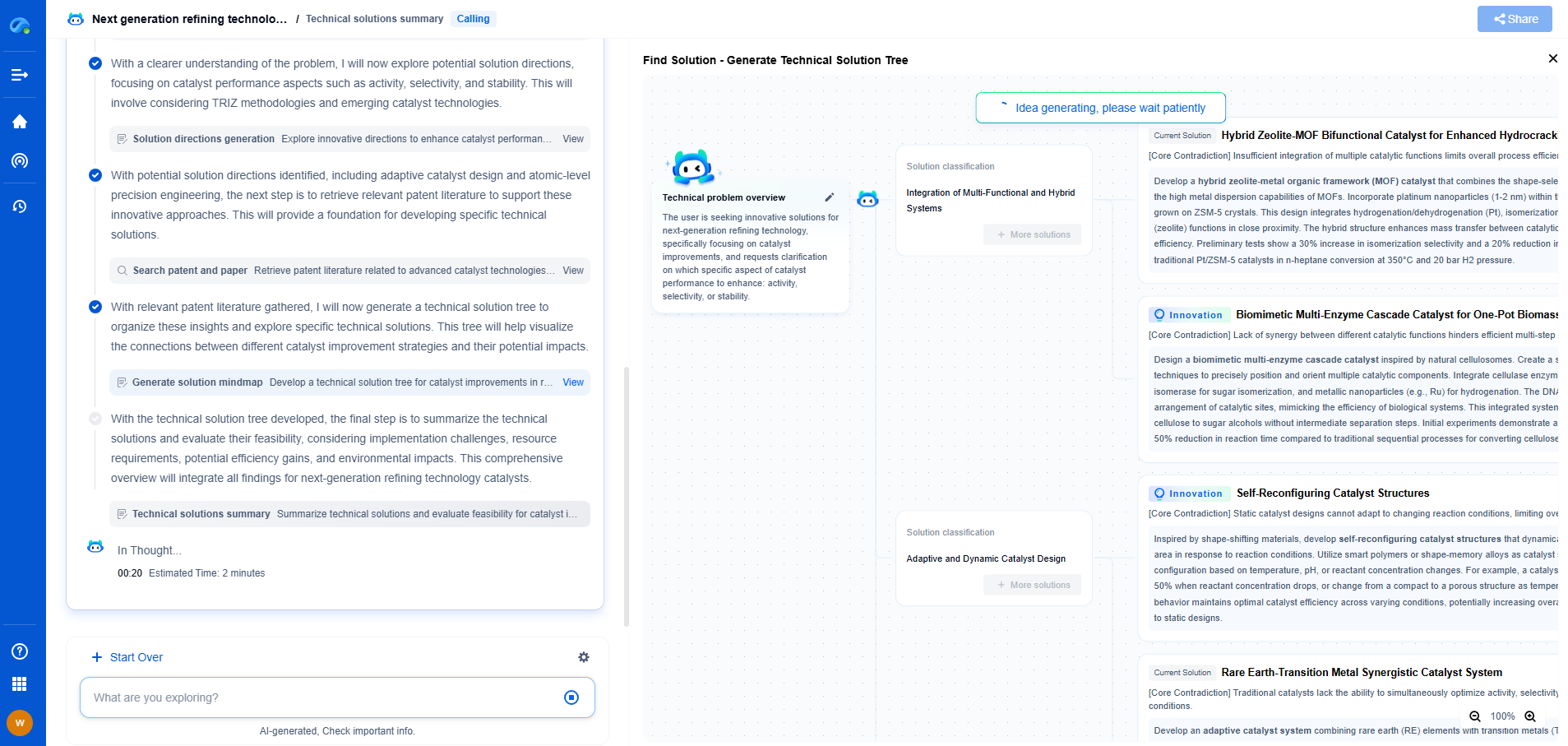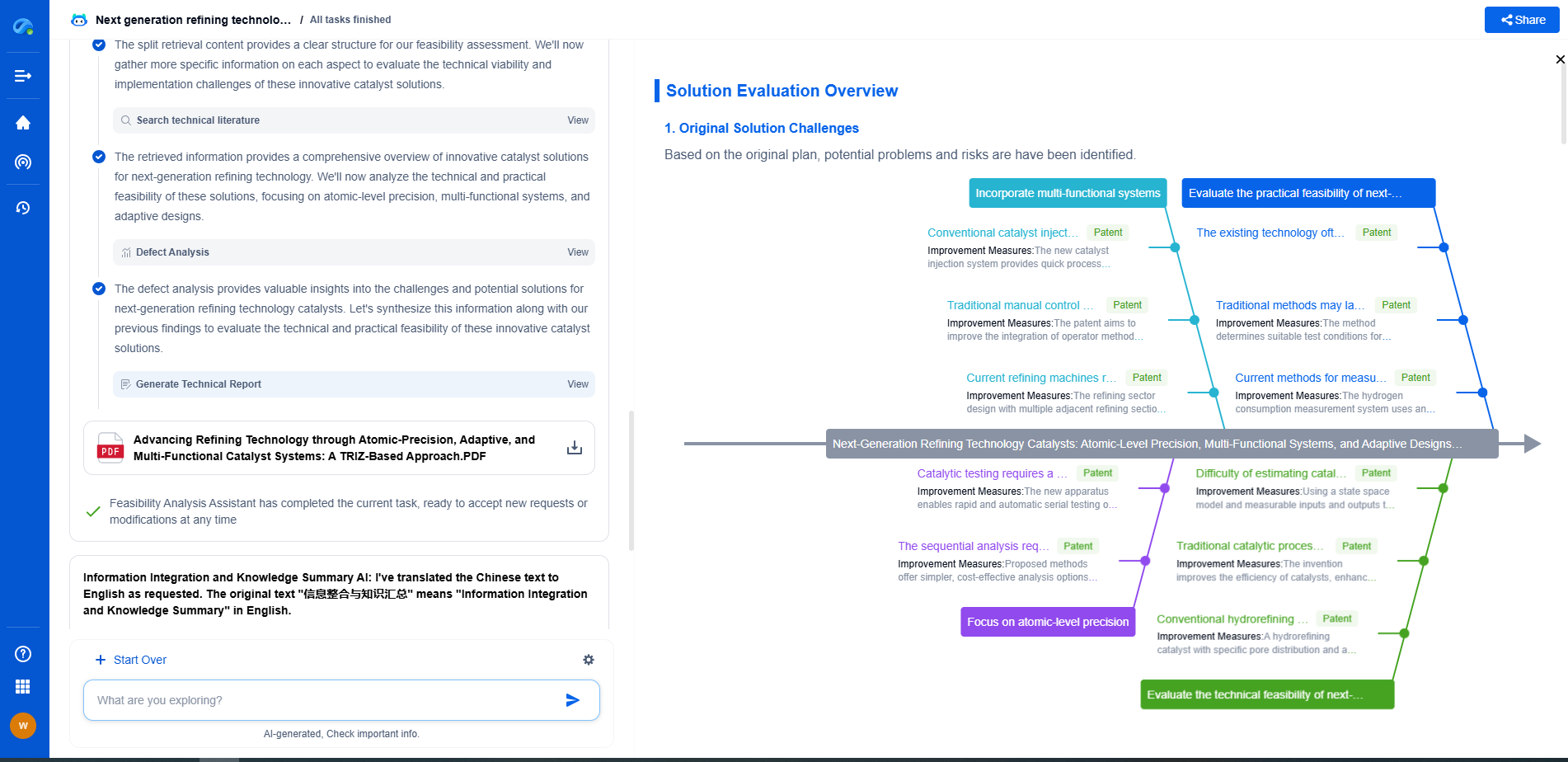How Oscilloscope Sampling Rates and Bandwidth Affect Signal Fidelity
JUL 9, 2025 |
Oscilloscopes are fundamental tools in electronics for visualizing electrical signals. They allow engineers and technicians to observe the change in electrical signals over time, which is crucial for diagnosing faults, characterizing waveforms, and validating circuit designs. Two of the most critical parameters that define the capabilities of an oscilloscope are its sampling rate and bandwidth. Understanding how these specifications affect signal fidelity is essential for selecting the right oscilloscope for your application.
Understanding Sampling Rates
The sampling rate of an oscilloscope is the speed at which it can capture data points of a signal per second, typically measured in samples per second (S/s). According to the Nyquist-Shannon sampling theorem, to accurately reconstruct a signal, the sampling rate must be at least twice the highest frequency component in the signal. This is known as the Nyquist rate. If the sampling rate is below this threshold, it can lead to a phenomenon called aliasing, where higher frequency signals are misrepresented as lower frequency ones.
In practice, it is recommended to use an oscilloscope with a sampling rate at least five to ten times the highest frequency of interest to ensure accurate and detailed waveform reconstruction. This oversampling provides additional data points for better resolution and capturing of transient events that may occur between peaks.
Implications of Bandwidth
Bandwidth is another crucial parameter that defines the range of frequencies an oscilloscope can accurately measure. It is often specified as the frequency at which the input signal is attenuated to 70.7% of its original amplitude, known as the -3dB point. An oscilloscope with insufficient bandwidth can result in a distorted display of the signal waveform, as it cannot pass high-frequency components above its cutoff frequency.
Choosing an oscilloscope with appropriate bandwidth is essential to ensure signal fidelity. For most applications, it is recommended that the oscilloscope's bandwidth be at least three to five times the highest signal frequency of interest. This ensures that the oscilloscope can accurately capture the signal's amplitude and phase characteristics without significant attenuation or distortion.
The Interplay Between Sampling Rate and Bandwidth
While both sampling rate and bandwidth are important, they serve different roles in signal measurement. The sampling rate determines how often the oscilloscope samples the signal, affecting temporal resolution, while bandwidth affects the range of frequencies that can be accurately captured. When selecting an oscilloscope, it's crucial to consider the interplay between these two parameters.
For instance, an oscilloscope with a high sampling rate but low bandwidth may capture many data points per second, but it will not accurately represent high-frequency components of the signal. Conversely, high bandwidth with a low sampling rate might capture the frequency range but miss fast transient changes or details due to insufficient sampling.
Optimizing Signal Fidelity
To optimize signal fidelity, one must consider both sampling rate and bandwidth together. For example, when dealing with high-speed digital signals, both high bandwidth and high sampling rates are necessary to ensure that all aspects of the signal, such as rise times and transient spikes, are captured accurately. Conversely, for lower-frequency analog signals, the requirements may not be as stringent.
Additionally, modern oscilloscopes often come with features like anti-aliasing filters, which help mitigate the effects of aliasing, and interpolation techniques, which help reconstruct signals more accurately from the available data points. Understanding these features and how they complement sampling rate and bandwidth can further enhance measurement accuracy.
Conclusion
Oscilloscopes are indispensable tools in the field of electronics, and understanding the implications of their sampling rate and bandwidth is critical for achieving high signal fidelity. By carefully considering these parameters and their interplay, one can select the most appropriate oscilloscope for their needs, ensuring accurate and reliable signal measurement. Whether working with high-speed digital circuits or low-frequency analog signals, the right oscilloscope will provide the clarity and insight needed to successfully troubleshoot and optimize electronic designs.
Navigating the evolving world of electrical measurement—from high-precision signal integrity to advanced test protocols like BERT or TDR—demands more than just expertise; it demands smart tools.
Patsnap Eureka empowers you to keep up—by turning complex patent data, technical parameters, and industry signals into actionable insight. It’s your AI partner for exploring what’s next in test, measurement, and electrical diagnostics.
💡 Try Patsnap Eureka for free and see how it transforms the way you work with electrical measurement technologies.
- R&D
- Intellectual Property
- Life Sciences
- Materials
- Tech Scout
- Unparalleled Data Quality
- Higher Quality Content
- 60% Fewer Hallucinations
Browse by: Latest US Patents, China's latest patents, Technical Efficacy Thesaurus, Application Domain, Technology Topic, Popular Technical Reports.
© 2025 PatSnap. All rights reserved.Legal|Privacy policy|Modern Slavery Act Transparency Statement|Sitemap|About US| Contact US: help@patsnap.com

